
“We’re cutting off the branch we’re sitting on!”
Charlotte Lenz | 20 September 2023
A glance at the collections of the Deutsches Historisches Museum reveals the immense variety of objects that are related to different epochs and topics of German history. They tell stories of our past or current lives, of famous or often unknown persons and events. In our new blog series #Umweltsammeln (#Environmentcollecting) we present various objects that have to do with the topic of “environment”. Unexpected questions raised by the heads of the different collection sections open new perspectives on historical objects and often reveal startling parallels to questions that deal with our current world.
The collection of the DHM Library takes up the topic “Environment” in many different ways. By acquiring specific objects, for example, it documents the eventful history of the relationship between humankind and the universe. Charlotte Lenz, staff member and deputy director of the Library, shows how the motivations and intentions of explorers of the universe have changed over the centuries.
Until now, only twelve Germans have been aboard a flight into the vast expanse of outer space. The volcanologist Alexander Gerst, who was privileged to travel into space in 2014 and again in 2018, became a great favourite with the general public because he “took both the public and his fellow astronauts with him into the orbit” (Gerst [2017] p. 8). He also delivered the above title quote, which suggests in the end that curiosity and thirst for knowledge are not the only motivation for the 166 days he spent in space – thus the title of his book.
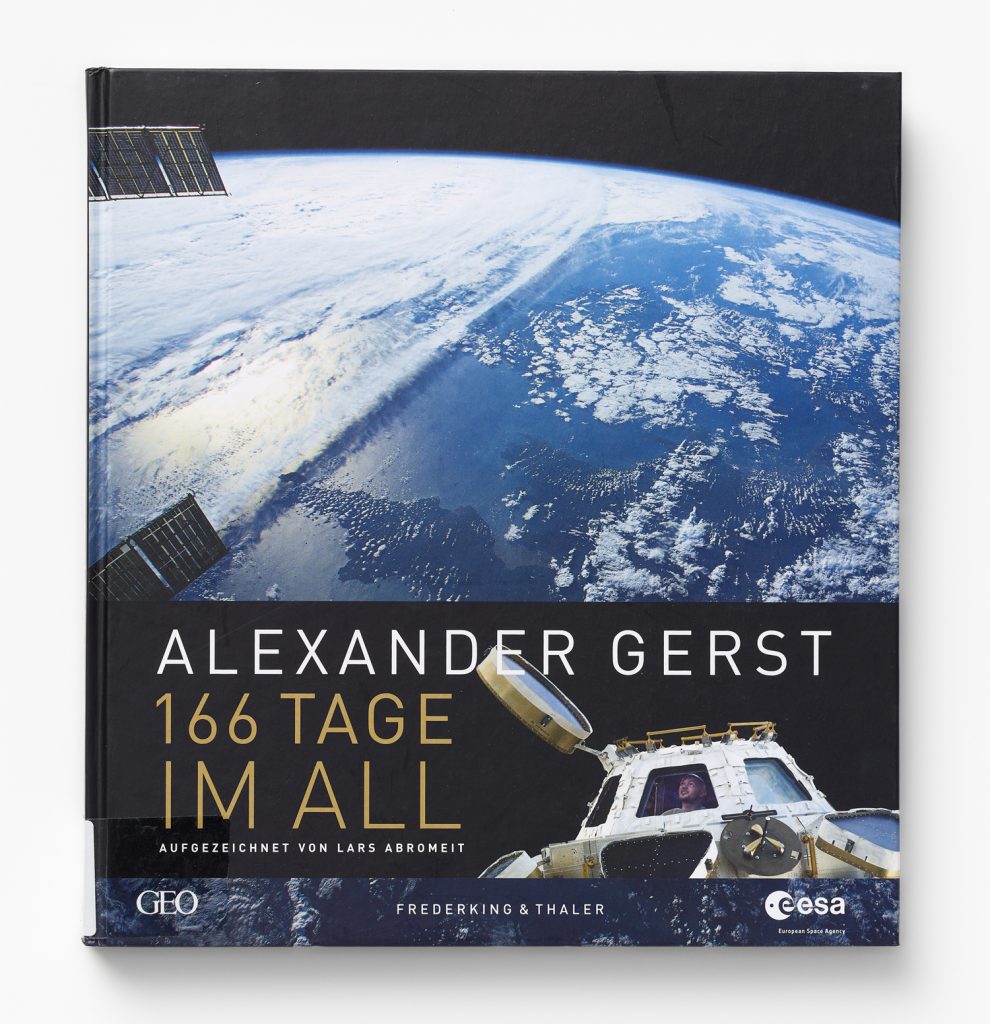
The study and discussion of the universe with its composition and processes goes back to the Stone Age. The process of observing the celestial bodies, which is bundled together under the term astronomy, soon had an effect on everyday life because it determined the hours of the day and the seasons – divisions that still mark our lives. For centuries, astronomy and the closely related field of astrology were the prevailing sciences used to explain earthly occurrences. With time, astrology lost its status because it offered no claim to verifiable assertions, but rather attempted to explain processes by means of the position of the stars.
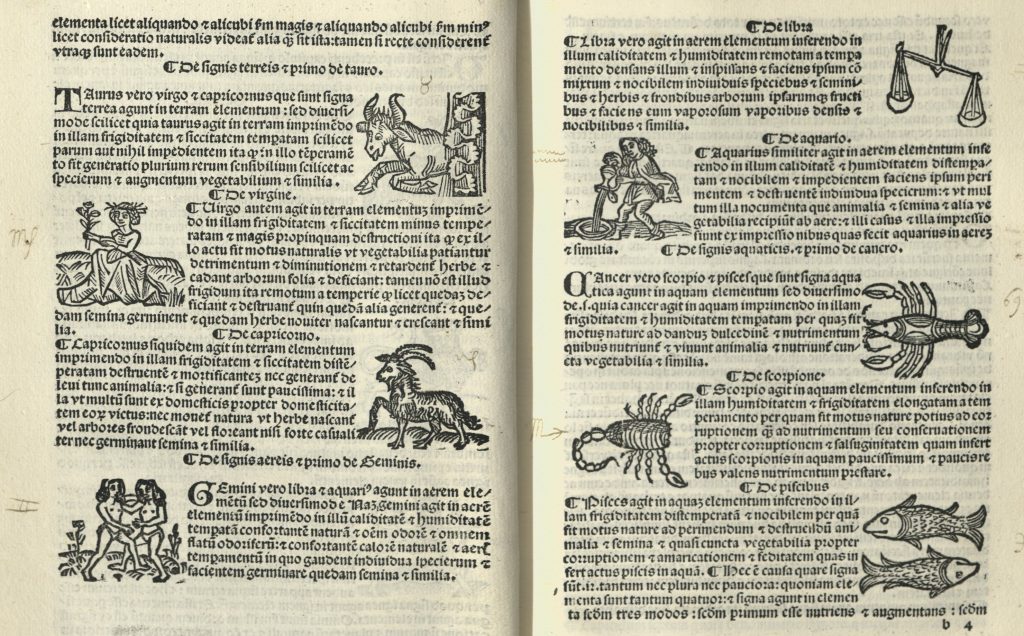
Guido (Bonatus):
Decem continens tractatus Astronomiae
Augsburg: Ratdolt, 1491
DHM-Bibliothek R 97/507
Galileo Galilei:
Dialogo
Florenz: Landini, 1632
DHM-Bibliothek R 2021/85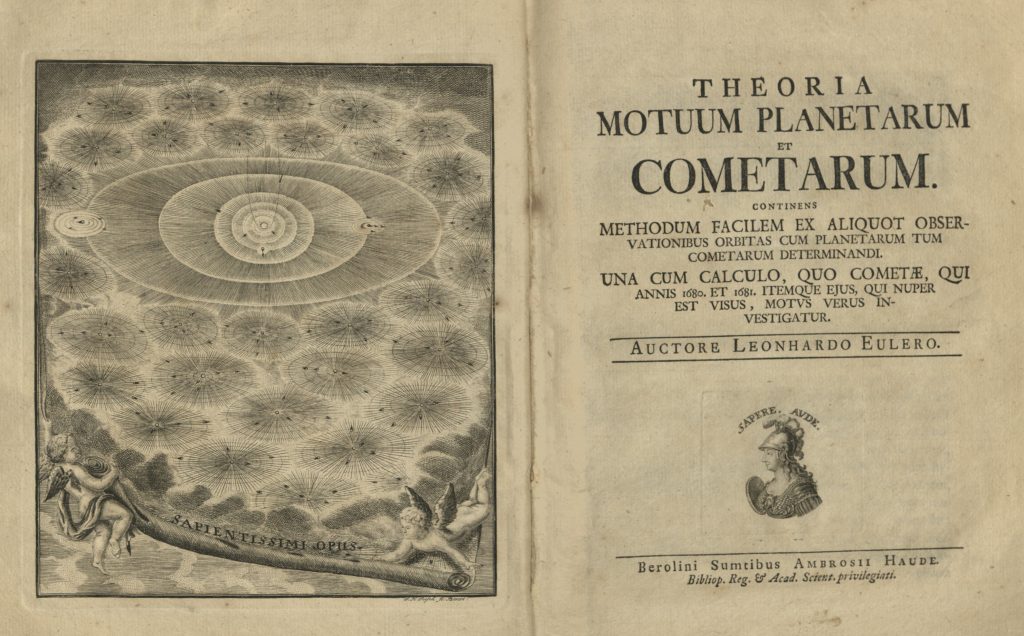
Leonhard Euler:
Theoria Motuum Planetarum Et Cometarum
Berlin: Haude, 1744
DHM-Bibliothek RA 00/160
One of the earliest examples of the exploration of space in the DHM Library is Decem tractatus Astronomiae (Book of Astronomy) from the 13th century by the Italian mathematician and astronomer Guido Bonatti (Bonatus), which was first published in Augsburg in 1491. In addition to the sun and the moon, Bonatti recognised of five other planets. Like his contemporaries, he believed that the earth was the centre of the universe and all the other heavenly bodies circled around it. He explored above all the twelve signs of the zodiac, whose constellation, in keeping with astrological beliefs, influenced the fate of the world. In 1543, Nicolaus Copernicus identified the earth as a planet that rotates on its own axis and, like the other planets, revolves around the sun, thus refuting Bonatti’s theory, which had prevailed until that time. Towards the end of the 16th century, the universal scholar Galileo Galilei defended the new teaching against the supreme authority of the Roman Catholic Inquisition. For six years he fought for permission to publish his famous work Dialogue Concerning the Two Chief World Systems, which had finally been completed in February 1632, but already banned in July of that year. The Swiss mathematician and physicist Leonhard Euler set a further milestone in the deciphering of the universe with his major work on the movement of planets and comets, for whose orbits he compiled formulas and calculations. All of these scientific luminaries of the past had one thing in common: their explorations aimed to explain the inexplicable and to perceive for the people the otherwise unseen.

An anecdote that teaches us to accept things as given only when they are scientifically proven, but which nevertheless remain controversial, comes from the year 1835. A year earlier, the British astronomer Sir John Herschel had set out on an expedition to South Africa. Since an account of his new research findings had not yet been published, Richard Adams Locke, at the time an unknown American journalist, published an entirely fictitious series of articles about the expedition in the New York newspaper The Sun under the title “Great Astronomical Discoveries lately made by Sir John Herschel … at the Cape of Good Hope”. He not only reported in great detail about a gigantic, albeit non-existent telescope, but also described peacefully grazing bison, sandy beaches, poppies and pyramids that Herschal had allegedly observed on the moon. He even added bat-men with wings and a unicorn that had also supposedly been discovered there. The scam, which merely served to raise the circulation of the newspaper, went down in history as the Great Moon Hoax. For the author Locke, who had no interest in focussing on scientific progress, it was no doubt chiefly about personal fame and financial gain.
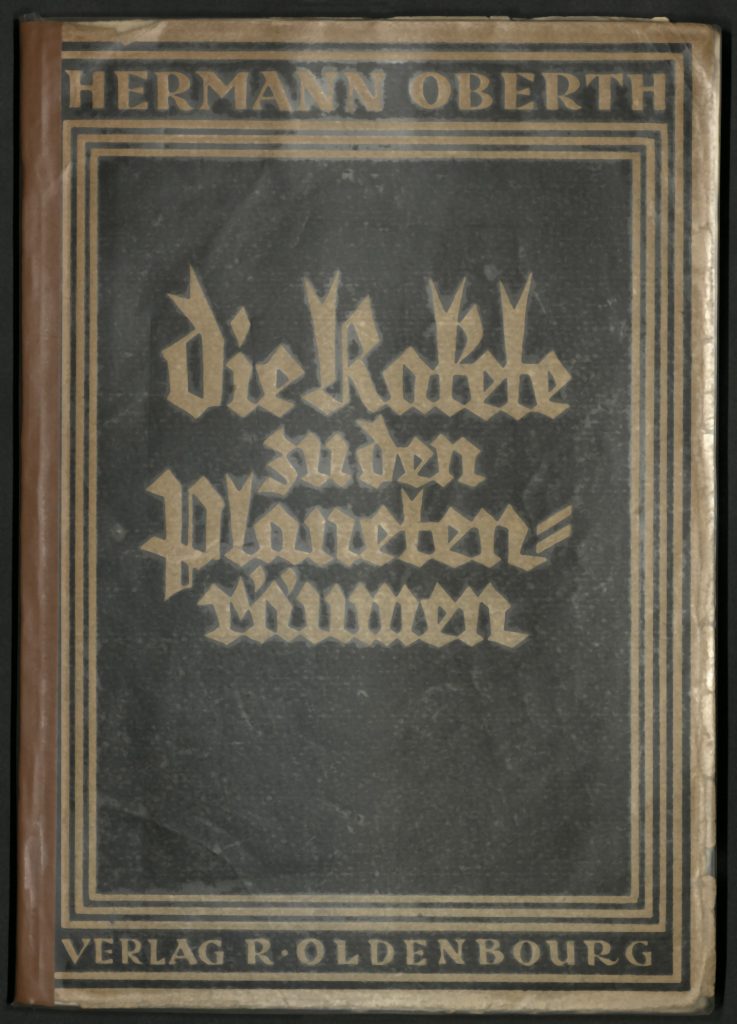
Hermann Oberth:
Die Rakete zu den Planetenräumen
München [u.a.]: R. Oldenbourg, 1923
DHM-Bibliothek 19/325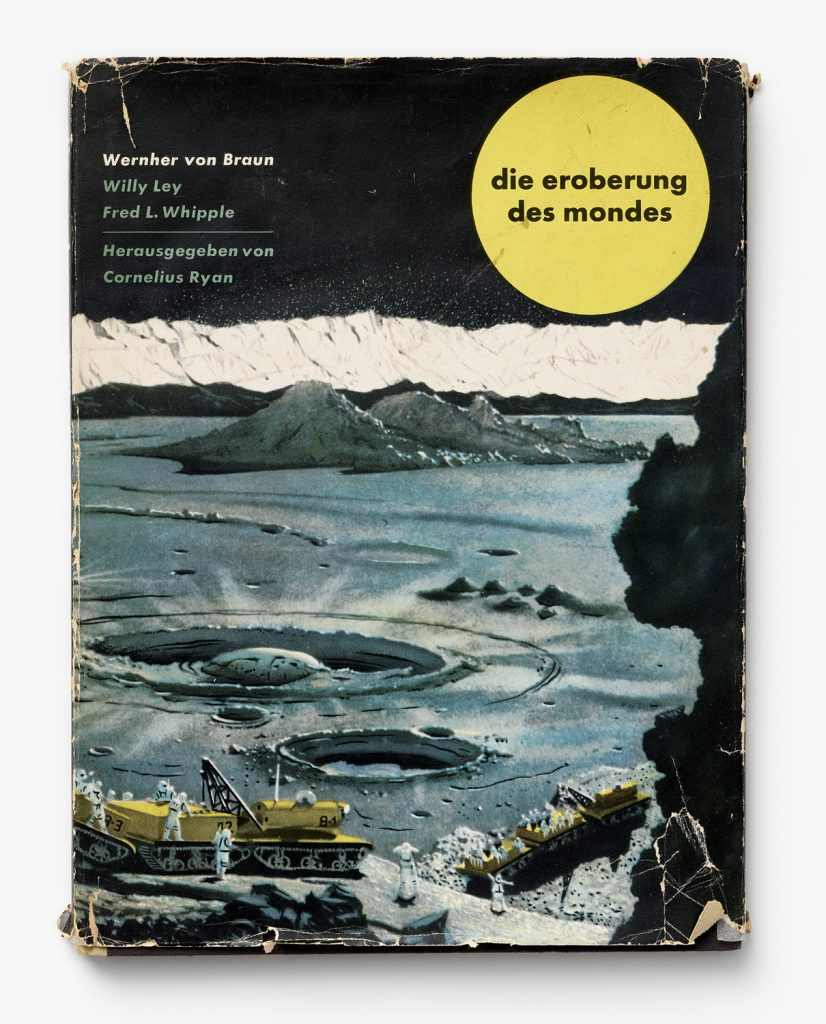
Wernher von Braun [u.a.]:
Die Eroberung des Mondes
Frankfurt/M.: S. Fischer Verlag, 1954
DHM-Bibliothek RA 96/915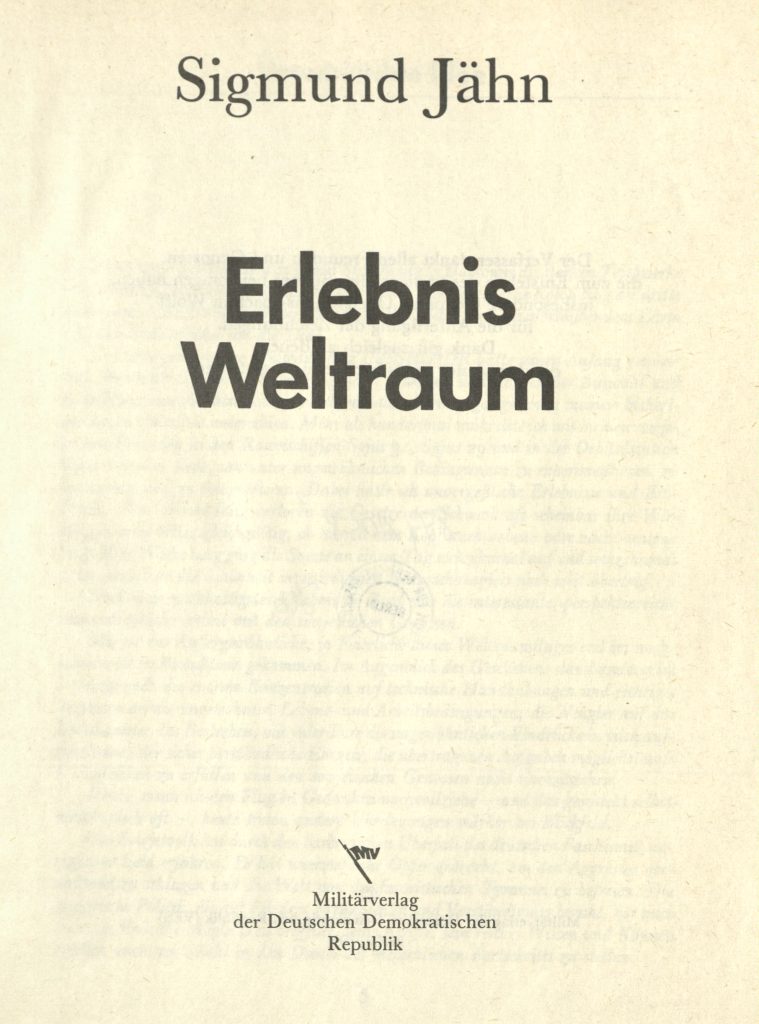
Sigmund Jähn:
Erlebnis Weltraum
Berlin: Militärverlag der DDR, 1983
DHM-Bibliothek 84/1058<2>
In the 20th century, many scientists began to look for ways to study the universe not only from the earth, but directly in space. As early as 1917, the well-known physicist Hermann Oberth designed a rocket powered by ethanol and oxygen that would be able to penetrate the earth’s atmosphere. In his most important work By Rocket into Planetary Space from 1923 – exactly 100 years ago – he postulated the daring thesis: “Such machines can be built so that people (probably without detriment to their health) can fly up in them.” (Oberth [1923], p. [7]) How proud he must have been when his ideas, then considered unfeasible, were realised, first in 1957 with the launch of the satellite Sputnik and then in 1961 when the cosmonaut Yuri Gagarin was the first human to journey into outer space. These landmarks in space travel triggered a veritable hype that still represents the lifelong dream of many scientists, and meanwhile of private persons as well.

Amazon region with logging roads
in the deforested rain forest
(Gerst [2017], p. 104, detail)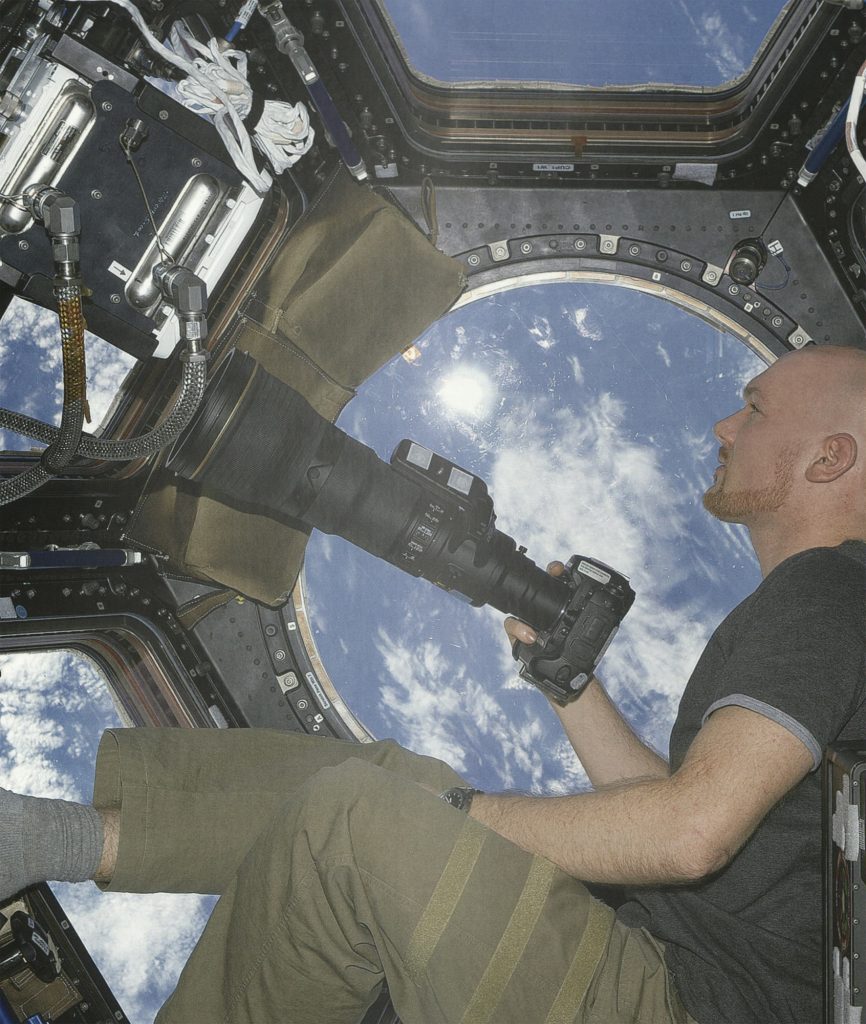
Alexander Gerst with a
180 degree view from the copula
(Gerst [2017], p. 139, detail)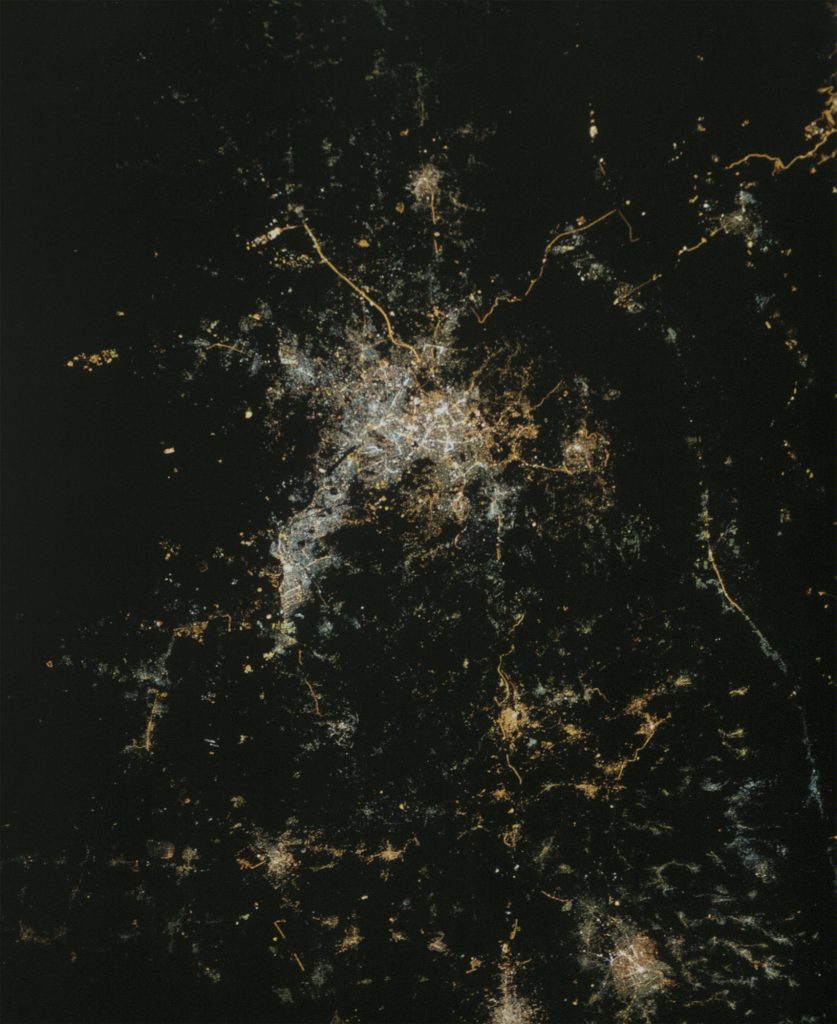
Near East
War area between Israel and Palestine
(Gerst [2017], p. 96, detail)
But now back to Alexander Gerst, who, as mentioned, has already realised this dream twice in his life, in 2014 as a technician with extra-vehicular activity, and in 2018 as commander of the ISS. In his opinion, “curiosity” and “thirst for knowledge” still provide the basis for the human exploration of outer space. But due to modern scientific possibilities to observe the earth’s beautiful, yet fragile environment from the outside, there are now additional motivations, in particular admonition and warning. Alongside the boundless beauty of the earth, Gerst also saw “how carelessly we deal with our resources” (Gerst [2017], p. 22ff) and documented it with pictures of the ravaged rain forest and battle areas. Sigmund Jähn, who in 1978 was the first German to travel into space, described this condition even more drastically when he called human beings as “robbers who let their environment suffer – evidently without consideration of subsequent generations – and in many cases even destroy it. (Gerst [2017], p. 6] One of the main tasks of the current exploration of space is thus to sharpen our consciousness for the “really great problems” on earth and to bring people together to “work jointly to solve them” out of concern for our planet. (Gerst [2017], p. 8]
|
Foto: DHM |
Klaudia Charlotte LenzKlaudia Charlotte Lenz is deputy head of the library of the Deutsches Historisches Museum |
